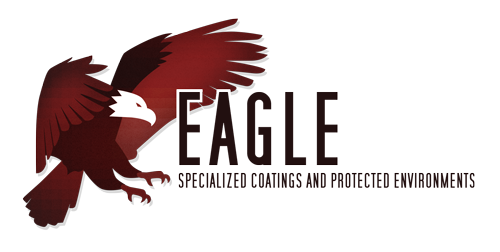

“The Fire Safety Community is accepting the use of flame retardant chemicals more each year. Research efforts, that have been done by well respected, Certified Fire Test Laboratories and accepted by most of the fire safety community, have shown that using properly applied flame retardant chemicals improves fire safety. Smoke detection, heat detection, sprinklers, early warning systems, hazard analysis, risk analysis and other devices or assessment systems are still very important to fire safety and their usage will continue to increase. The use of flame retardant chemicals, with these above mentioned methods and devices, should further increase fire safety. The key to increased fire safety is still a system approach.”
Handbook of Fire Retardant Coatings and Fire Testing Services 1994
Handbook of Fire Retardant Coatings and Fire Testing Services 1994
Safecoat Latex
Interior Intumescent Class "A" Flame Spread Rating and 1¾ Hour Fire Resistance Rating
Any additive, coating or penetrant which prohibits the substrate from supporting a flame. They are sometimes referred to as fire retardants which is somewhat of a misnomer. They are designed to prevent a flame from becoming a fire. If it is already a fully involved fire when it hits the flame retardant at best it will slow the fire down which is also good when considering that time is one of the most critical factors. This is why flame retardants are classified by flame spread ratings and not by fire resistance rating.
SUPERTHERM ® has a " 0 " Flame spread Rating and " 0 " Smoke Developed Rating even though it's primary function is to act as a thermal barrier at only 10/1000" thickness.
Flame retardants are like fire stop systems, monitored fire alarms and automatic fire sprinklers, providing passive protection in that they are always working 24 hours a day whether we're there or not. Flame retardants by coming under the PREVENTION category form our 1st line of defence.
Additives - some examples of flame retardant additives are in the plastic coating on electrical wiring, in foam used for fighting fires, fire fighters turn out gear and inherently flame retardant fabrics ( IFR ) such as Trevira, Nomex, Proban, etc..
Coatings - clear or coloured ( generally white ) whether intumescent ( forms a char under flame to provide the additional benefit of a limited thermal barrier ) or non intumescent are applied to the surface of the substrate like a paint. The key criteria with coatings is to ensure that the chosen coating system is suitable for that particular application and the required manufactures wet \ dry mil ( 1/1000" thickness ) rate and coating system has been followed. The use of a wet mil gauge is strongly recommended.
Penetrants - usually clear and soaks into a porous substrate. The key criteria with penetrants is to follow the manufacturers required spread rate of sq. ft. \ gallon or meters \ per liter.
Test Criteria: the flame retardant in order to be acceptable to the Authority Having Jurisdiction must have been tested by a certified fire testing laboratory such as Warnock Hersey, Underwriters Laboratories, Intertek, etc. and have met certain standards such as :
Steiner Tunnel Test
CAN4-S102 - Test for Surface Burning Characteristics of Building Materials and Assemblies
ULC S102 - Test for Surface Burning Characteristics of Building Materials and Assemblies
UL 723 - Test for Surface Burning Characteristics of Building Materials
ASTM E84 - Surface Burning Characteristics of Building Materials
NFPA 255 - Fire Tests of Building Construction and Materials
UBC 43-1 - Fire Tests of Building Construction and Materials
CAN/CGSB-4.2-M77 - Flame Resistance Vertical Burning Test
CAN4-S109 - Flame Tests of Flame Resistant Fabrics and Films
ULC S109 - Flame Tests of Flame Resistant Fabrics and Films
NFPA 701 - Fire Tests for Flame Resistant Textiles and Films
NFPA 705 - Recommended Practice for a Field Flame Test for Textiles and Films
CAN4-S107 - Fire Tests of Roof Coverings
ULC S107 - Tests for Fire Resistance of Roof Covering Materials
ASTM E108 - Fire Tests of Roof Coverings
NFPA 256 - Fire Tests of Roof Coverings
UBC 32-7 - Test for Determining the Fire Retardancy of Roof Covering Materials
UL 790 - Fire Resistance of Roof Coverings
Test Result Classifications and Requirements:
Wood: Class A ~ flame spread of 0 - 25; Class B ~ flame spread of 26 - 75; Class C ~ flame spread of 76 - 200
Fabric: "Flame must not spread over the complete length of the sample or in excess of 4 inches from the bottom of the sample. There shall be not more than two seconds of after flame. Materials that break and drip flaming particles shall be rejected if the materials continue to burn after they reach the floor."
Health and Environmental Considerations:
In the past flame retardants have been known to be toxic in nature but that has changed with the advent of new environmentally friendly products. Be sure to get a copy of the MATERIAL SAFETY DATA SHEET ( MSDS ) and read it before using any flame retardant yourself.